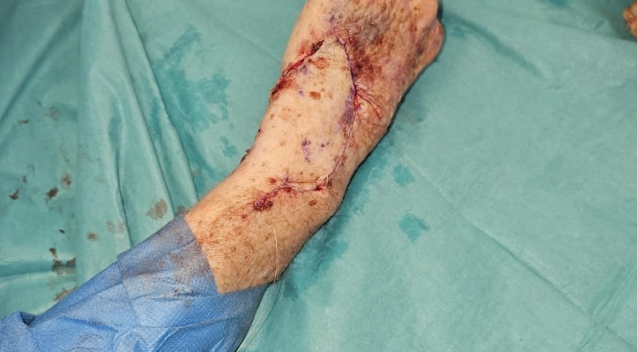Why Is Skin Cancer Reconstruction Needed?
- To fix flaws that remain after the cancer is removed.
- To bring back a natural appearance, especially on exposed surfaces and the face.
- To enhance skin function and avert contractures.
Types of Skin Cancer Reconstruction Procedures
- Primary Closure:-Suturing the wound directly if sufficient surrounding skin exists.
- Skin Grafts:- A healthy skin piece is removed from somewhere else on the body and covers the defect.
- Local Flap Reconstruction:- The surrounding skin is moved to cover the area with blood supply maintained.
- Tissue Expansion:- Applied to extensive defects, it involves stretching the adjacent skin to form additional tissue for coverage.
- Microsurgical Free Flap Reconstruction:- Transplants tissue from one area of the body with its blood supply for complicated cases.
Recovery
What to Expect During Recovery?
In the initial period, one could experience mild pain, swelling, and bruising. Removal of stitches typically is done within a period of one to two weeks. Recovery could take a few months depending upon the extent of the reconstruction. Follow-ups are important to get the best possible aesthetic and functional outcome.
Post Surgery
- Take good care of the wound and switch the dressing as instructed.
- Avoid exposing treated skin to the sun.
- Treat the scars using the recommended treatments, e.g., silicone gels.
- Scan the website for any infections or abnormalities.
Reconstruction not only restores your natural appearance after skin cancer is removed, but it also plays a significant role in your psychological and emotional recovery. What would be best suited for your case can be determined by consulting an experienced surgeon in case you’re planning to reconstruct your skin cancer.
Submit Enquiry
If you are interested in a particular treatment, please contact us or to find out more about our clinic, please follow the link below.


